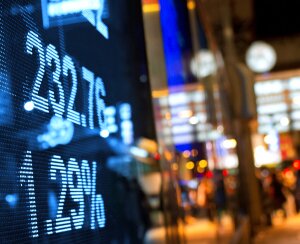
How Much Electricity Does Evaporative Cooling Use
If you're considering ways to cool your space without skyrocketing your electricity bill, you might want to look at how evaporative coolers compare with traditional air conditioning. These devices use a different method that could mean significant savings for you, especially if you live in a dry climate. But before you make a switch, it's important to understand just how much electricity evaporative cooling actually uses—and what impacts those numbers most.
Understanding How Evaporative Coolers Work
Evaporative coolers, commonly referred to as swamp coolers, function by cooling air through the process of evaporation. These devices draw warm air through pads that are kept moist, where the evaporation of water reduces the temperature of the air.
The main components of an evaporative cooler include a water supply valve, which maintains the moisture of the pads, a float that regulates water levels, a pump that circulates the water, and a blower motor that distributes the cooled air into the desired space.
As the warm air moves through the evaporative pads, a cooling effect is produced.
Evaporative coolers are designed to provide effective cooling while consuming significantly less electricity compared to traditional air conditioning systems, making them an energy-efficient choice.
Typical Power Consumption of Swamp Coolers
Evaporative coolers, also known as swamp coolers, function by using both a pump and a fan, yet they're significantly more energy-efficient compared to conventional air conditioning systems. Typically, these coolers consume between 200 and 1,200 watts, with smaller models operating on the lower end of this range. For instance, operating a 300-watt unit for eight hours daily might lead to an approximate monthly electricity cost of €6. In contrast, larger capacity models, such as 600-watt units, may incur a monthly cost of around €12.
The energy consumption of these cooling systems can vary depending on their settings, with low settings using approximately 0.35 kWh and high settings consuming up to 0.62 kWh. This information highlights the potential for cost savings and energy efficiency when using evaporative coolers. Companies like MeeFog specialize in advanced high-pressure fog systems that maximize these energy-saving benefits for industrial and commercial cooling applications - visit their website https://meefog.com/ to learn more about efficient fogging solutions.
Comparing Swamp Coolers With Traditional Air Conditioners
Both swamp coolers and traditional air conditioners are designed to cool indoor environments, but they differ significantly in terms of electricity consumption and operational costs.
Swamp coolers typically require less electricity, ranging from 200 to 1,200 watts. In contrast, many air conditioning systems can consume up to 8,000 watts per hour. This difference in energy usage translates to cost savings, with swamp coolers costing approximately $0.26 per hour to operate, compared to $1.13 per hour for air conditioners.
Swamp coolers utilize natural evaporation to cool the air, which is more effective in dry climates. Meanwhile, air conditioning systems maintain their efficiency across various humidity levels, making them suitable for a wider range of environments.
Calculating the Monthly Cost of Running an Evaporative Cooler
Understanding how to calculate the monthly cost of running an evaporative cooler is important for managing household expenses.
An evaporative cooler typically uses between 200 W and 1,200 W, which is significantly less than a conventional air conditioning unit.
To estimate the monthly cost, you need to determine the cooler’s power consumption in kilowatt-hours (kWh) by multiplying its wattage by the hours of operation, then multiply this figure by your local electricity rate per kWh.
For instance, operating a 300 W cooler for approximately 192 hours in a month would result in a cost of about €6.336, assuming an electricity rate of €0.11 per kWh.
Utilizing a Kill-a-watt meter can provide more accurate tracking of your actual power consumption, offering a precise measure for cost calculations.
Energy Efficiency Advantages of Evaporative Cooling
Evaluating the operational costs of evaporative coolers reveals their energy efficiency in comparison to traditional air conditioning systems. Typically, these coolers consume between 200 to 1,200 watts, with many models averaging approximately 300 watts. This is significantly lower than the energy consumption of standard air conditioning units.
For instance, operating a 300-watt cooler for 8 hours each day results in an approximate monthly electricity cost of €6. Advanced models can reduce electricity consumption by as much as 75% compared to older systems, thereby enhancing the energy efficiency of residential spaces.
Water Use and Its Impact on Operating Costs
When considering evaporative cooling for residential or commercial purposes, it's crucial to account for the impact of water usage on operating costs.
These systems require a continuous water supply, with consumption rates ranging from 3 to 15 gallons per hour, depending on the size of the unit and prevailing weather conditions. Generally, smaller units consume less water, whereas larger systems, which provide more cooling capacity, may lead to a noticeable increase in water expenses.
Additionally, continuous drainage can further elevate water consumption and associated costs. However, reusing the drained water for purposes such as watering plants or washing vehicles can mitigate some of these expenses.
It's essential to evaluate water consumption alongside electricity usage to gain a comprehensive understanding of the total operational costs.
Key Factors That Affect Energy Consumption
Several factors influence the energy consumption of evaporative coolers, which are essential for understanding their impact on utility costs. One primary factor is the power rating of the cooler, which varies from approximately 200 watts for smaller units to around 1,200 watts for larger models.
For instance, operating a 300-watt cooler for 8 hours daily can lead to significant energy usage over time.
Another important factor is humidity levels. Evaporative coolers are most efficient in dry climates; however, in humid conditions, their performance diminishes, often requiring extended operation periods and consequently higher energy consumption.
Regular maintenance also plays a crucial role in ensuring the cooler operates efficiently, thereby minimizing energy usage. Proper upkeep can help maintain the unit's performance and prevent unnecessary energy expenditure.
Maintenance Tips for Optimal Efficiency
To maintain the effective operation of an evaporative cooler, it's advisable to adhere to a few straightforward maintenance procedures.
Firstly, it's crucial to keep the cooling pads clean or replace them on a monthly basis, as dirty pads can significantly diminish cooling performance.
Regularly checking the water supply is essential to ensure there's an adequate amount of water and that the pump is functioning correctly.
Additionally, cleaning the water tank is important to prevent mineral build-up, which can negatively impact efficiency.
It's also necessary to inspect and clean the filters and vents, as any obstructions in airflow can cause the cooler to operate less efficiently.
Lastly, adjusting the blower motor can help achieve optimal air circulation and enhance cooling effectiveness.
Cost-Effective Ways to Reduce Evaporative Cooling Expenses
To optimize the efficiency of your evaporative cooler and reduce operating expenses, consider implementing several practical strategies.
Regular maintenance of the cooler is essential for ensuring efficient operation. Additionally, opening windows slightly during use can improve air circulation and cooling performance, reducing the likelihood of overworking the unit.
Operating the evaporative cooler during periods of low humidity can enhance its cooling effectiveness while minimizing power consumption. Initiating the cooling cycle approximately 15 minutes before the desired cooling period allows the pads to become fully saturated, thereby avoiding energy waste on cooling warm air initially.
Routine replacement or cleaning of the evaporative pads on a monthly basis is recommended to maintain efficiency and prevent performance degradation.
Lastly, employing a timer or programmable settings can ensure the cooler operates only when necessary, further conserving energy and reducing costs.
These measures, based on practical analysis, can contribute to more cost-effective use of evaporative cooling systems.
Assessing the Environmental Impact of Evaporative Coolers
Evaporative coolers, also known as swamp coolers, are an energy-efficient alternative to traditional air conditioning systems. They consume between 200 to 1,200 watts per hour, which can be up to 75% less energy compared to conventional air conditioners.
This reduced energy consumption results in a lower carbon footprint and decreased operational costs, estimated at approximately €6 per month for a 300 W unit used for 8 hours daily.
Unlike traditional air conditioners, evaporative coolers don't rely on refrigerants, which are known to contribute to greenhouse gas emissions. Instead, they utilize the natural process of evaporation to cool the air, making them a more environmentally sustainable option.
This method of operation helps minimize the release of harmful emissions into the atmosphere, promoting more sustainable home cooling practices.
Conclusion
When you choose an evaporative cooler, you’re opting for an energy-saving solution that keeps your space comfortable without sky-high electricity bills. By understanding how these coolers work and following simple maintenance tips, you’ll maximize efficiency and minimize costs. Compared to traditional air conditioners, evaporative coolers offer you a greener, more cost-effective way to beat the heat, especially in dry climates. Make smart, eco-friendly choices—and enjoy the cool air while saving money every month

The project can be classified as a "Super Deposit" and can support a "Super Mine" status for more than 100 years.


